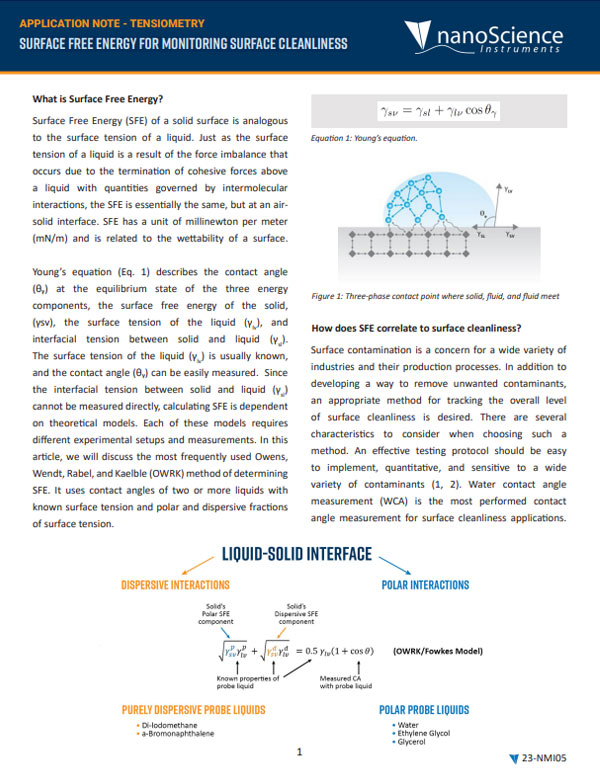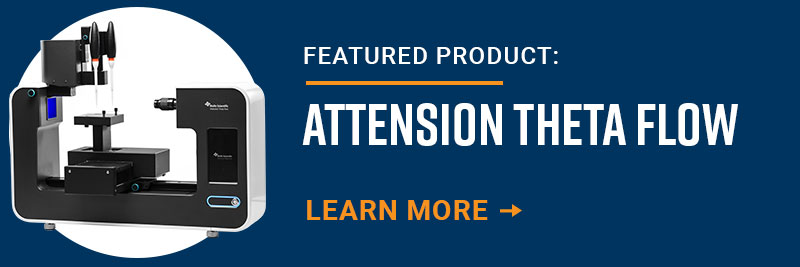What is Surface Free Energy?
Surface Free Energy (SFE) of a solid surface is analogous to the surface tension of a liquid. Just as the surface tension of a liquid is a result of the force imbalance that occurs due to the termination of cohesive forces above a liquid with quantities governed by intermolecular interactions, the SFE is essentially the same, but at an air-solid interface. SFE has a unit of millinewton per meter (mN/m) and is related to the wettability of a surface.
Young’s equation (Eq. 1) describes the contact angle (θᵧ) at the equilibrium state of the three energy components, the surface free energy of the solid, (γsv), the surface tension of the liquid (γlv), and interfacial tension between solid and liquid (γsl). The surface tension of the liquid (γlv) is usually known, and the contact angle (θᵧ) can be easily measured. Since the interfacial tension between solid and liquid (γsl) cannot be measured directly, calculating SFE is dependent on theoretical models. Each of these models requires different experimental setups and measurements. In this article, we will discuss the most frequently used Owens, Wendt, Rabel, and Kaelble (OWRK) method of determining SFE. It uses contact angles of two or more liquids with known surface tension and polar and dispersive fractions of surface tension.


